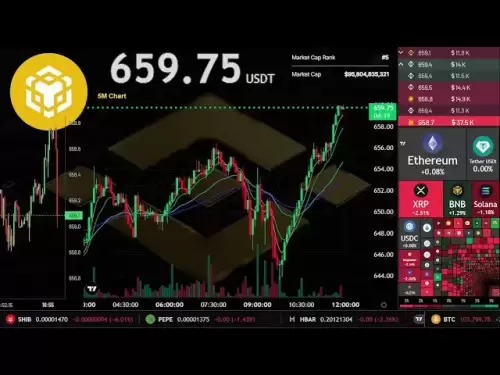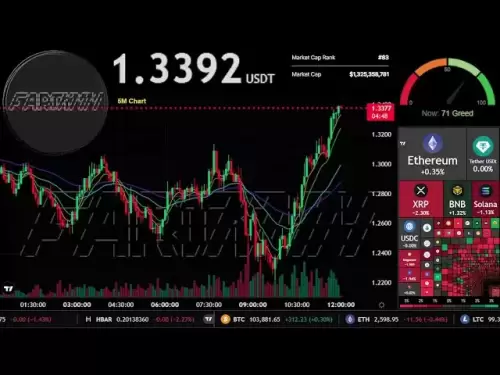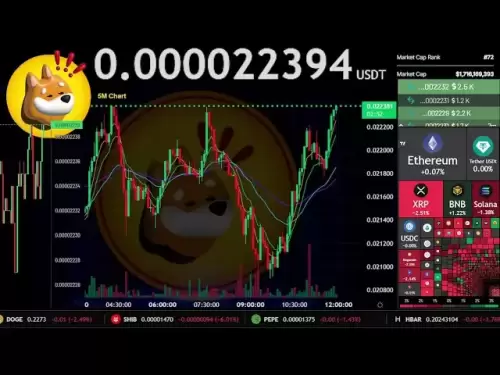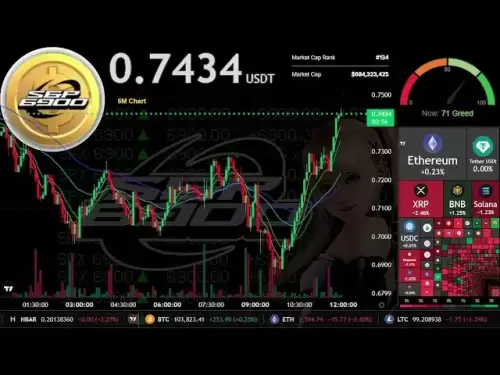-
 Bitcoin
Bitcoin $103,300.7146
-0.33% -
 Ethereum
Ethereum $2,539.4384
-2.33% -
 Tether USDt
Tether USDt $1.0001
0.01% -
 XRP
XRP $2.4273
-5.07% -
 BNB
BNB $653.1550
0.18% -
 Solana
Solana $169.1920
-4.43% -
 USDC
USDC $1.0000
0.01% -
 Dogecoin
Dogecoin $0.2200
-5.69% -
 Cardano
Cardano $0.7634
-4.63% -
 TRON
TRON $0.2729
-1.31% -
 Sui
Sui $3.8461
-2.29% -
 Chainlink
Chainlink $16.0359
-5.37% -
 Avalanche
Avalanche $23.3976
-6.67% -
 Stellar
Stellar $0.2928
-4.13% -
 Shiba Inu
Shiba Inu $0.0...01479
-6.12% -
 Hyperliquid
Hyperliquid $25.6169
2.38% -
 Hedera
Hedera $0.1980
-4.53% -
 UNUS SED LEO
UNUS SED LEO $8.8123
-0.83% -
 Bitcoin Cash
Bitcoin Cash $394.0366
-2.53% -
 Toncoin
Toncoin $3.0785
-5.34% -
 Litecoin
Litecoin $99.4600
-1.49% -
 Polkadot
Polkadot $4.7774
-4.72% -
 Pi
Pi $0.8837
-9.60% -
 Monero
Monero $335.5333
-1.76% -
 Bitget Token
Bitget Token $4.8259
1.63% -
 Pepe
Pepe $0.0...01311
-5.69% -
 Dai
Dai $1.0000
0.01% -
 Ethena USDe
Ethena USDe $1.0005
0.01% -
 Uniswap
Uniswap $6.2187
-5.77% -
 Bittensor
Bittensor $433.9257
-3.88%
What is the governance model of a private chain and who is responsible for decision-making?
Private chains restrict access to select groups, with governance models like centralized, consortium, or hybrid dictating decision-making processes and responsibilities.
May 15, 2025 at 11:21 pm
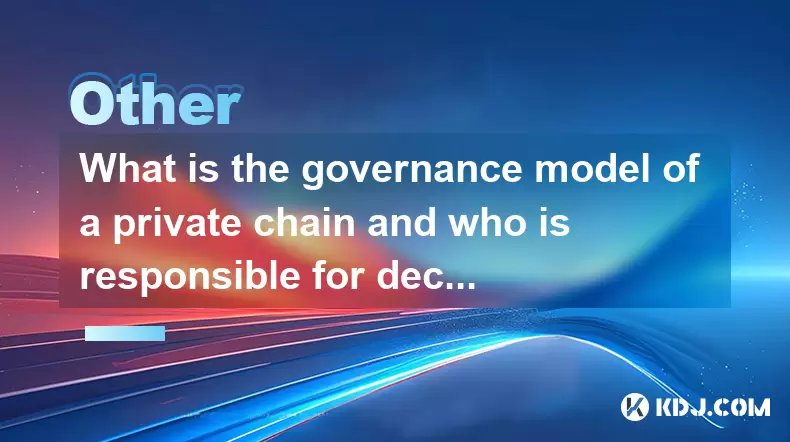
Introduction to Private Chains
A private chain, also known as a permissioned blockchain, is a type of blockchain network where access is restricted to a select group of participants. Unlike public blockchains, which anyone can join and participate in, private chains are controlled by a single entity or a consortium of organizations. This control extends to the governance model of the private chain, which dictates how decisions are made and who is responsible for them.
Understanding Governance in Private Chains
Governance in the context of a private chain refers to the rules, processes, and structures that guide the operation and evolution of the network. It encompasses decision-making on aspects such as protocol upgrades, participant permissions, and the overall management of the blockchain. The governance model of a private chain is crucial because it determines how the network adapts to changes and resolves conflicts.
Types of Governance Models in Private Chains
Private chains can adopt various governance models, each with its own set of rules and decision-making structures. The most common models include:
Centralized Governance: In this model, a single entity has complete control over the private chain. This entity is responsible for making all decisions, from setting up the network to managing upgrades and participant permissions. Centralized governance is straightforward but can lead to issues related to trust and transparency.
Consortium Governance: This model involves a group of organizations that collectively govern the private chain. Decisions are made through a consensus among the consortium members, which can be more democratic but may also lead to slower decision-making processes.
Hybrid Governance: Some private chains may adopt a hybrid approach, combining elements of both centralized and consortium governance. For example, a single entity might manage the day-to-day operations, while a consortium handles strategic decisions.
Who is Responsible for Decision-Making in Private Chains?
The responsibility for decision-making in a private chain depends on the governance model adopted. Here's a detailed look at who is responsible in each model:
Centralized Governance: In this model, the single controlling entity is solely responsible for decision-making. This entity could be a company, a government agency, or any organization that has set up the private chain. They make decisions on everything from adding or removing participants to implementing protocol changes.
Consortium Governance: In a consortium model, the member organizations are collectively responsible for decision-making. Each member typically has a vote or a say in the decision-making process. The exact mechanism can vary, ranging from simple majority votes to more complex consensus mechanisms.
Hybrid Governance: In a hybrid model, decision-making responsibilities are split. The single controlling entity might handle operational decisions, while the consortium is responsible for strategic decisions. This split can help balance efficiency and inclusivity.
Case Studies of Private Chain Governance
To better understand how governance models work in practice, let's look at a few case studies:
Hyperledger Fabric: Hyperledger Fabric is an example of a private chain that can support various governance models. It is often used by consortia of organizations, where governance decisions are made collectively. For instance, a group of banks might use Hyperledger Fabric to create a private chain for interbank transactions, with each bank having a say in governance.
Corda: Corda, developed by R3, is another private chain that supports consortium governance. It is designed for financial institutions and allows them to transact directly with each other. Governance decisions in Corda networks are typically made by the participating organizations, ensuring that all parties have a voice in how the network evolves.
Enterprise Ethereum: Some enterprises use Ethereum's technology to create private chains. In such cases, governance can be centralized, with the enterprise making all decisions, or it can be consortium-based if multiple enterprises are involved.
Implementing Governance in a Private Chain
Implementing a governance model in a private chain involves several steps, which can vary depending on the chosen model. Here's a general guide on how to set up governance in a private chain:
Define the Governance Model: The first step is to decide on the governance model. Will it be centralized, consortium-based, or hybrid? This decision should be based on the needs and structure of the participating organizations.
Establish Governance Rules: Once the model is chosen, the next step is to establish clear governance rules. These rules should cover decision-making processes, voting mechanisms, dispute resolution, and protocol upgrade procedures.
Set Up the Decision-Making Body: Depending on the model, this could be a single entity, a consortium of organizations, or a combination of both. The decision-making body should be clearly defined and its responsibilities outlined.
Implement Governance Tools: Many private chains use specialized tools to manage governance. These tools can help automate voting, track proposals, and ensure that governance processes are followed. Examples include governance smart contracts or dedicated governance platforms.
Test and Refine: After setting up the governance model, it's important to test it thoroughly. This can involve running simulations or conducting trial runs to ensure that the governance processes work as intended. Based on the results, the governance model may need to be refined.
Frequently Asked Questions
Q: Can the governance model of a private chain be changed after it is established?
A: Yes, the governance model of a private chain can be changed, but it requires consensus among the participants. The process typically involves proposing the change, voting on it, and implementing the new model if approved. The exact procedure would depend on the current governance rules.
Q: How does the governance model affect the security of a private chain?
A: The governance model can significantly impact the security of a private chain. A centralized model might be more vulnerable to single points of failure, while a consortium model can distribute risk but may also introduce new security challenges related to consensus among multiple parties.
Q: Are there any legal considerations when setting up the governance model of a private chain?
A: Yes, there can be legal considerations, especially in consortium models where multiple organizations are involved. Issues such as liability, intellectual property rights, and regulatory compliance need to be addressed. It's advisable to consult with legal experts to ensure that the governance model complies with relevant laws and regulations.
Q: How do participants in a private chain ensure transparency in the governance process?
A: Transparency can be ensured through clear documentation of governance rules, regular reporting on governance decisions, and the use of transparent voting mechanisms. Additionally, participants can use blockchain technology itself to record and verify governance actions, ensuring that all decisions are traceable and verifiable.
Disclaimer:info@kdj.com
The information provided is not trading advice. kdj.com does not assume any responsibility for any investments made based on the information provided in this article. Cryptocurrencies are highly volatile and it is highly recommended that you invest with caution after thorough research!
If you believe that the content used on this website infringes your copyright, please contact us immediately (info@kdj.com) and we will delete it promptly.
- Monero (XMR) Surges to Its Highest Level in Four Years as Demand Rose
- 2025-05-16 06:10:14
- 5 Cryptos to Watch: AurealOne (DLUME), DexBoss (DEBO), Bitcoin (BTC), Pi Network (PI), Penguiana (PENGU)
- 2025-05-16 06:10:14
- title: Coinbase Confirms SEC Is Investigating Whether the Crypto Exchange Has Misstated Its User Numbers
- 2025-05-16 06:05:14
- Binance Founder Corrects Wrong Reportage About TRUMP Digital Coin
- 2025-05-16 06:05:14
- Bitcoin (BTC) price forecast stays bullish as BTC consolidates above $103K
- 2025-05-16 06:00:25
- MetaMask May Be Getting Closer to Issuing Its Native Coin, Co-founder Dan Finlay Has Said
- 2025-05-16 06:00:25
Related knowledge
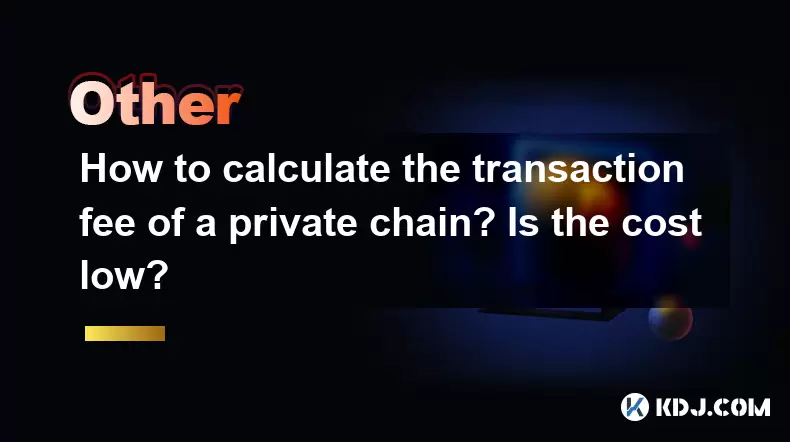
How to calculate the transaction fee of a private chain? Is the cost low?
May 16,2025 at 05:14am
How to Calculate the Transaction Fee of a Private Chain? Is the Cost Low? In the world of cryptocurrencies, understanding the transaction fees associated with different types of blockchains, including private chains, is crucial for users and developers alike. A private chain, also known as a permissioned blockchain, is a blockchain network where access ...
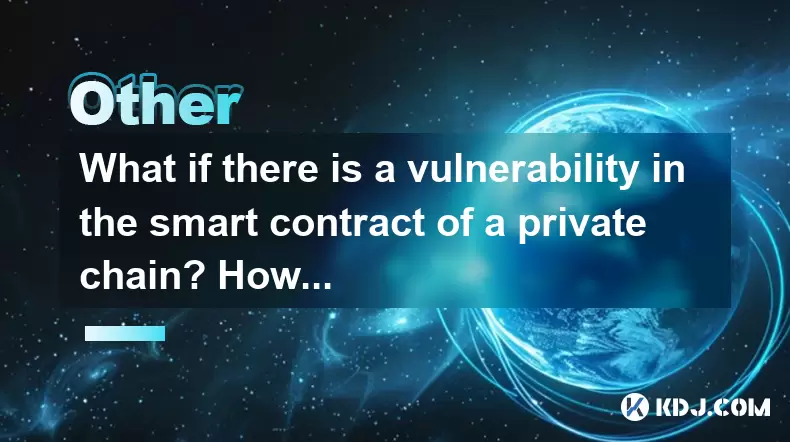
What if there is a vulnerability in the smart contract of a private chain? How to fix it?
May 15,2025 at 08:02pm
Introduction to Smart Contract Vulnerabilities in Private ChainsSmart contracts are self-executing programs that run on blockchain technology, designed to automate transactions and enforce agreements. While they offer numerous benefits, such as transparency and immutability, they are not immune to vulnerabilities. When a vulnerability is found in the sm...
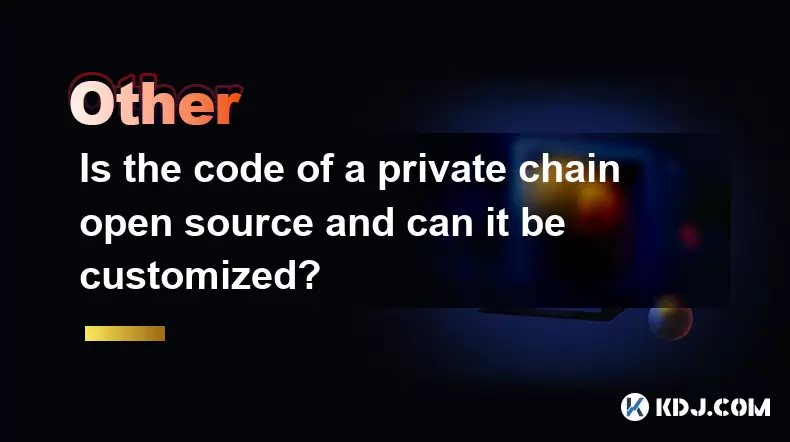
Is the code of a private chain open source and can it be customized?
May 15,2025 at 09:49pm
In the world of cryptocurrencies and blockchain technology, private chains or permissioned blockchains have become a topic of interest for many enterprises and organizations. A private chain is a blockchain network where access is restricted to a specific group of participants, as opposed to public blockchains like Bitcoin and Ethereum, which are open t...
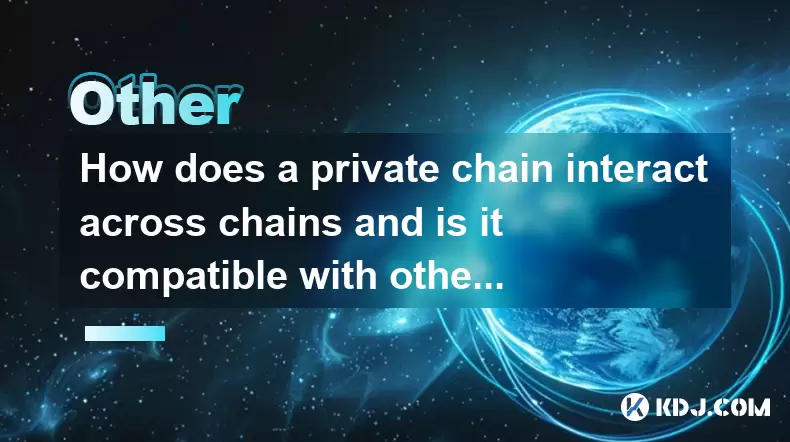
How does a private chain interact across chains and is it compatible with other chains?
May 15,2025 at 04:07pm
Understanding Private Chains and Their FunctionalityA private chain, also known as a permissioned blockchain, is a type of blockchain network where access and participation are controlled by a single organization or a consortium of organizations. Unlike public blockchains, where anyone can join and participate, private chains are restricted to a select ...
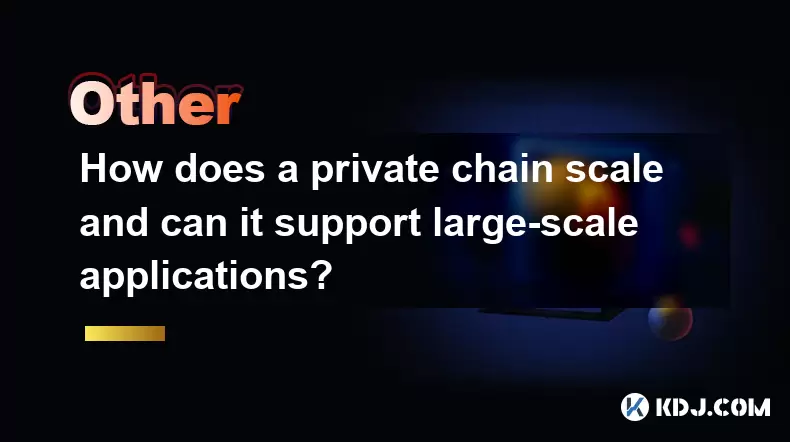
How does a private chain scale and can it support large-scale applications?
May 15,2025 at 03:00pm
Introduction to Private ChainsPrivate chains, also known as permissioned blockchains, are networks where access is restricted to a specific group of users. Unlike public blockchains, which are open to anyone, private chains offer more control over who can participate and what transactions can be processed. This controlled environment makes private chain...

What is the governance model of a private chain and who is responsible for decision-making?
May 15,2025 at 11:21pm
Introduction to Private ChainsA private chain, also known as a permissioned blockchain, is a type of blockchain network where access is restricted to a select group of participants. Unlike public blockchains, which anyone can join and participate in, private chains are controlled by a single entity or a consortium of organizations. This control extends ...

How to calculate the transaction fee of a private chain? Is the cost low?
May 16,2025 at 05:14am
How to Calculate the Transaction Fee of a Private Chain? Is the Cost Low? In the world of cryptocurrencies, understanding the transaction fees associated with different types of blockchains, including private chains, is crucial for users and developers alike. A private chain, also known as a permissioned blockchain, is a blockchain network where access ...

What if there is a vulnerability in the smart contract of a private chain? How to fix it?
May 15,2025 at 08:02pm
Introduction to Smart Contract Vulnerabilities in Private ChainsSmart contracts are self-executing programs that run on blockchain technology, designed to automate transactions and enforce agreements. While they offer numerous benefits, such as transparency and immutability, they are not immune to vulnerabilities. When a vulnerability is found in the sm...

Is the code of a private chain open source and can it be customized?
May 15,2025 at 09:49pm
In the world of cryptocurrencies and blockchain technology, private chains or permissioned blockchains have become a topic of interest for many enterprises and organizations. A private chain is a blockchain network where access is restricted to a specific group of participants, as opposed to public blockchains like Bitcoin and Ethereum, which are open t...

How does a private chain interact across chains and is it compatible with other chains?
May 15,2025 at 04:07pm
Understanding Private Chains and Their FunctionalityA private chain, also known as a permissioned blockchain, is a type of blockchain network where access and participation are controlled by a single organization or a consortium of organizations. Unlike public blockchains, where anyone can join and participate, private chains are restricted to a select ...

How does a private chain scale and can it support large-scale applications?
May 15,2025 at 03:00pm
Introduction to Private ChainsPrivate chains, also known as permissioned blockchains, are networks where access is restricted to a specific group of users. Unlike public blockchains, which are open to anyone, private chains offer more control over who can participate and what transactions can be processed. This controlled environment makes private chain...

What is the governance model of a private chain and who is responsible for decision-making?
May 15,2025 at 11:21pm
Introduction to Private ChainsA private chain, also known as a permissioned blockchain, is a type of blockchain network where access is restricted to a select group of participants. Unlike public blockchains, which anyone can join and participate in, private chains are controlled by a single entity or a consortium of organizations. This control extends ...
See all articles






















